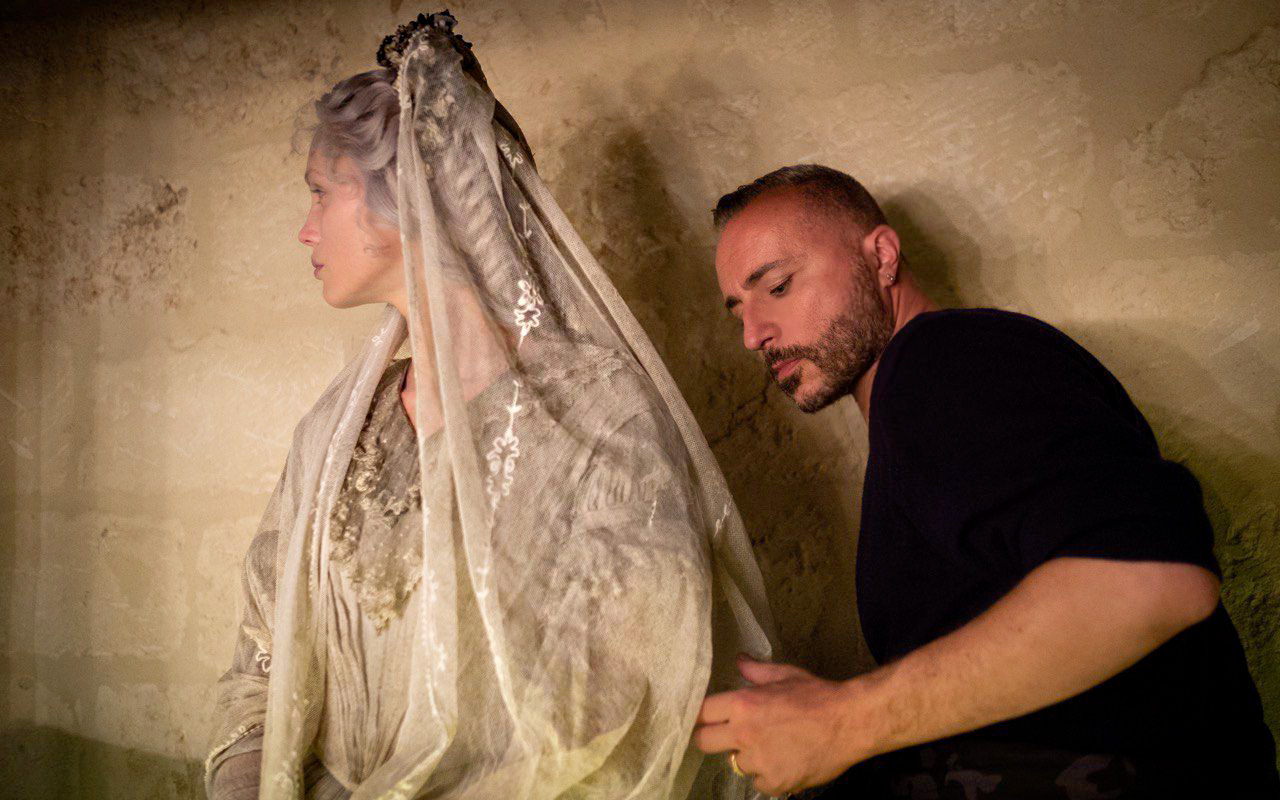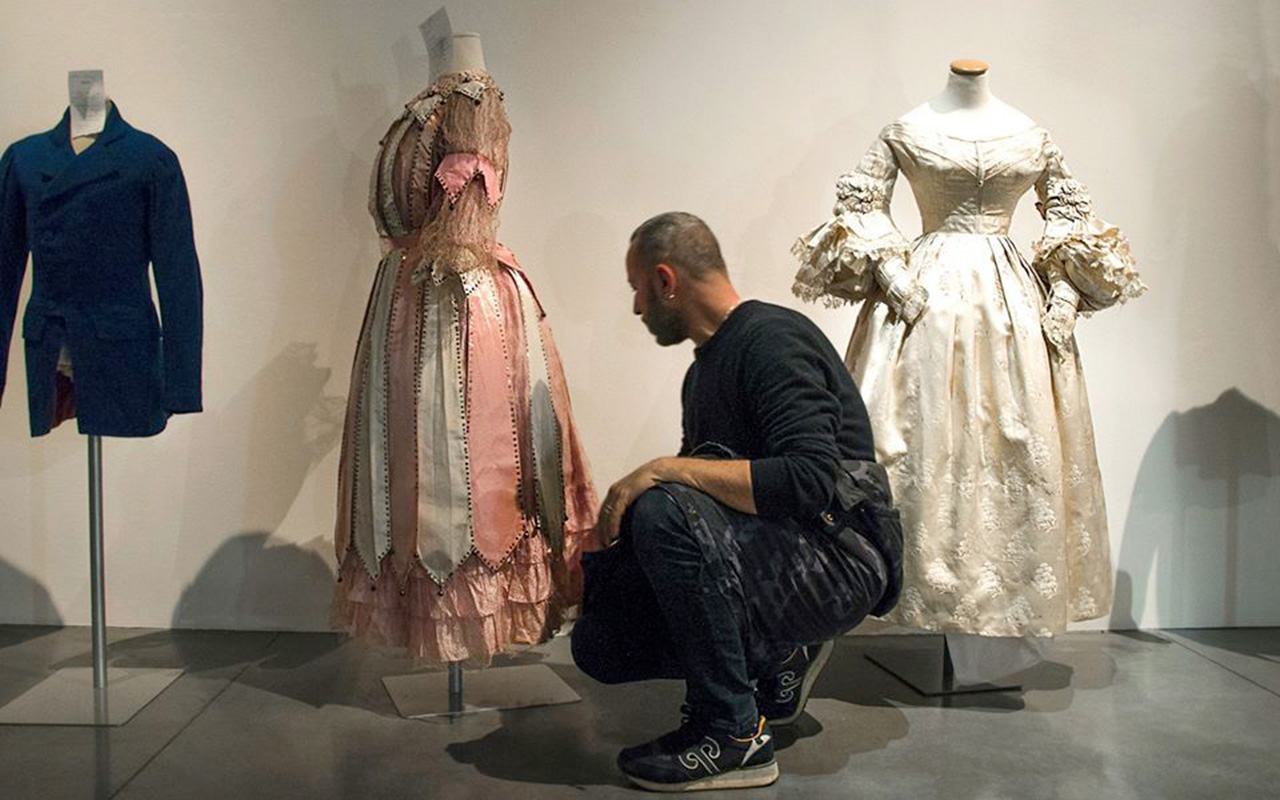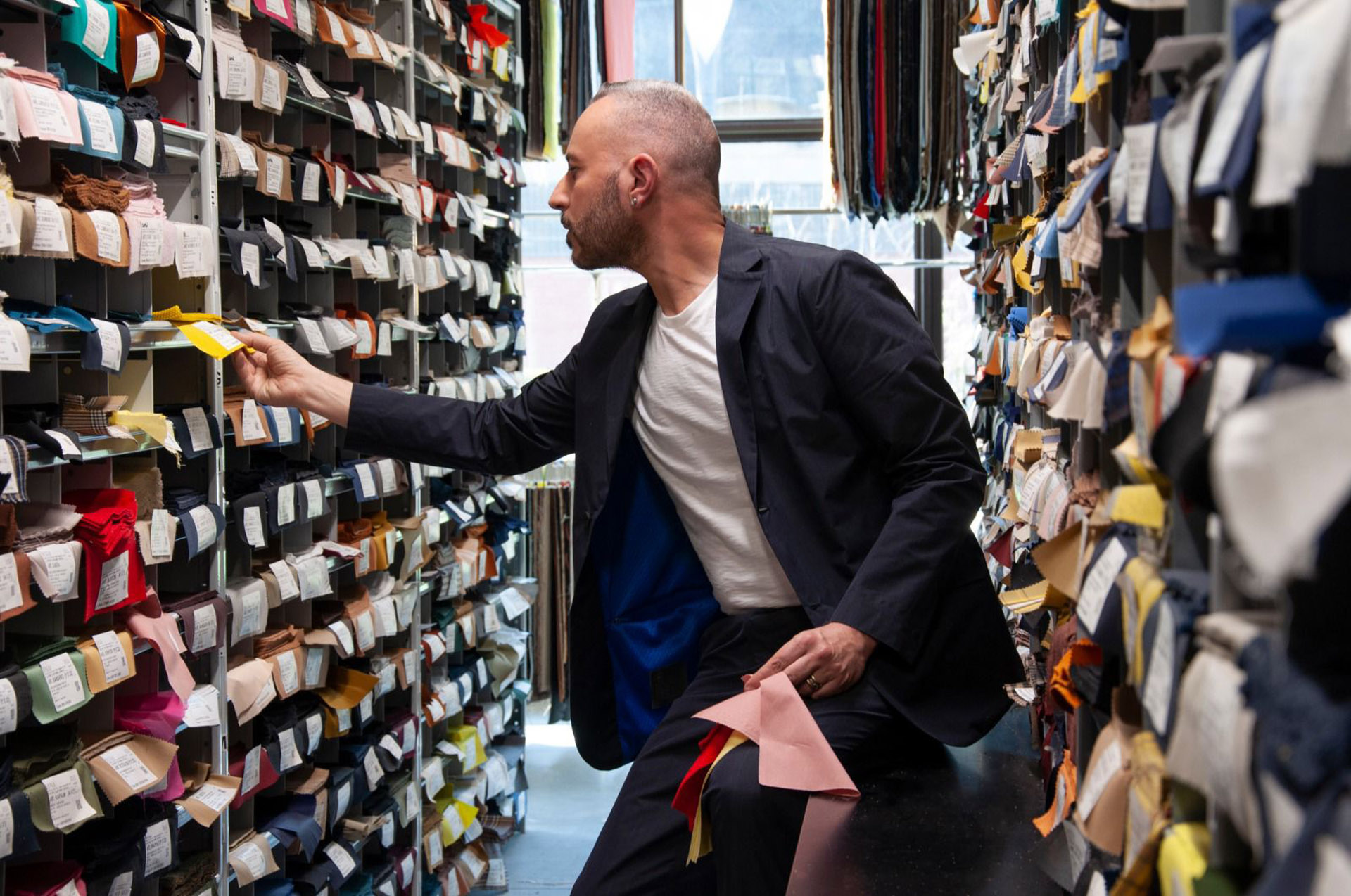A custodian of sartorial memory and Mentor of Master in Costume Design, Massimo Cantini Parrini, is more than a costume designer. He’s a fashion archaeologist with a collection of over 4,500 historical dresses preserved between Rome and Florence.
While his latest work in the film Maria, the biopic of Maria Callas starring Angelina Jolie and directed by Pablo Larraín, is being released in movie theaters, we retrace his extraordinary career, including Polimoda and the most renowned costume design institutes in the film industry.




Born in Florence, Italy, Cantini Parrini as a teenager first fell in love with costume and clothing after a visit to the Costume Gallery at Palazzo Pitti where his passion for collecting was ignited. Starting as a child to collect interesting objects and historical garments, first from his grandparents house and then at markets and antiques stalls where he would spend Sundays scouring, he began his own collection of period clothes. He wanted to save clothes, seeing salvation as a way to give a second chance to a garment, to breathe new life into it, a philosophy he would bring into defining costume design itself. Throughout his childhood, he was equally inspired by his seamstress grandmother, as it was with her that he had his first foray into the tricks of the garment designing and making trade.
He gained his diploma in Costume and Fashion Design from Istituto statale d’Arte di Firenze before continuing his studies at Polimoda, affiliated with the Fashion Institute of Technology in New York, going on to obtain a degree in Fashion Culture and Styling from the University of Florence, where he was mentored by costume history professor, Cristina Giorgetti. While studying, he won a competition held by the Centro Sperimentale di Cinematografia in Rome, as a student of the Oscar-winning Piero Tosi in the costume course, before joining the Tirelli costume house as assistant costume designer, making his film debut with Oscar-winning costume designer Gabriella Pescucci.

His career is exemplary and distinguished, marked by numerous prestigious nominations and awards for costume design. He has received two Academy Award nominations for Cyrano (J. Wright 2021) and Pinocchio (M. Garrone 2019), one BAFTA nomination for Cyrano, and two nominations at the prestigious CDG (Costume Designers Guild), for Cyrano and Pinocchio. His European recognition includes winning the European Film Award (EFA) for Dogman (M. Garrone 2018). He has won numerous awards in Italy, the most important of which are, eight David di Donatello nominations, winning six times for Miss Marx (S. Nicchiarelli 2021), Pinocchio (M. Garrone 2019), Bloody Richard (R. Torre, 2018), Indivisible (E. de Angelis 2016), The Tale of Tales (M. Garrone 2015). His work has also earned him four Nastri d’Argento nominations, with five wins for Miss Marx (S. Nicchiarelli 2021), Favolacce (Fratelli D’Innocenzo 2020), Pinocchio (M. Garrone 2019), Indivisible (E. de Angelis 2016), and The Tale of Tales (M. Garrone 2015).

His work on films includes: The Wholly Family (T. Gilliam 2011), How Strange to Be Called Federico (E. Scola 2013), Walesa the Man of Hope (A. Wajda 2014), The Tale of Tales (M. Garrone 2015), Indivisible (E. de Angelis 2016), Ella and John (P. Virzi’ 2016), Ophelia (C. McCardell 2018), Bloody Richard (R. Torre 2018), The Land of Enough (Fratelli D’Innocenzo 2017), Dogman (M. Garrone 2018), Pinocchio (M. Garrone 2019), Favolacce (Fratelli D’Innocenzo 2020), Miss Marx (S. Nicchiarelli 2021), Cyrano (J. Wright 2021), L’Immensita (E. Crialese 2022), Ferrari (M.Mann 2023), Maria (P.Larraìn 2024), and My son of the century (J. Wright 2024), to name just a few.
Releasing this year, he has worked on Maria, directed by Pablo Larraín and starring Angelina Jolie and The Deluge – Gli Ultimi Giorni di Maria Antonietta directed by Gianluca Jodice, and the magnificent series M directed by Joe Wright.

Cantini Parrini aims to create unique and accurate designs, drawing inspiration from art and history, one of his favorite galleries being the Galleria d’Arte Moderna di Roma, and using his extensive collection of historic garments as a kind of encyclopedia from which he draws ideas and inspirations, sketching and sewing them into real life pieces of the past. His collection includes garments from 1630 up to the early 2000s, notable for their original design, couturier and fashion house prominence, and historical or archival significance. It spans a global framework, from European, English, and American pieces as well as from further afield. He also collects accessories with over 10,000 examples of hats, bags, shoes and other accessories in the archive, a vast photographic archive, with over 40,000 photographs from 1840 to the 1970s, as well as many fashion magazines and over 2000 sketches by famous designers and costume designers.

From his extensive archive, Cantini Parrini seeks to create timeless and surprising designs, understanding clothing as a sort of “second skin” and forging garments that reflect culture and society. He is convinced that fashion and costume are different but have a lot to say to each other; what was fashion becomes costume and vice versa. They share the goal of not simply being a dress, but representing a complex and organized system that is curated and given meaning by its historical context and the person who wears it. Particularly inspired by the past, Cantini Parrini believes in taking the established rules of art, and subverting them to create true innovation in the industry. Through his costumes, we can draw from the past in order to access the future. A philosophy which permeates all of his films.
RESOURCES
To write this article, we used resources from Polimoda’s library at Villa Campus, one of the largest fashion libraries in Europe.
- Mr & Mrs Clark Ossie Clark and Celia Birtwell Fashion and Prints
- Pinocchio nei costumi di Massimo Cantini Parrini dal film di Matteo Garrone
Photos courtesy of Massimo Cantini Parrini.


